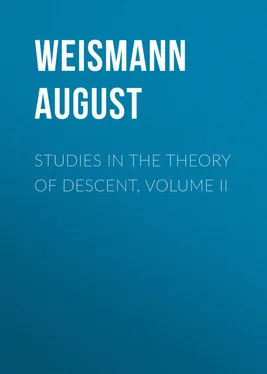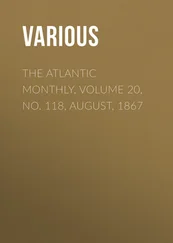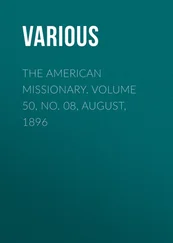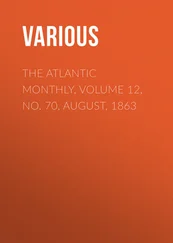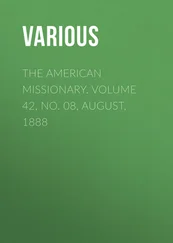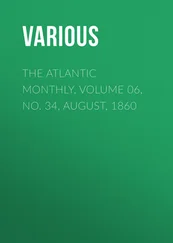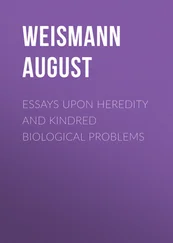August Weismann - Studies in the Theory of Descent, Volume II
Здесь есть возможность читать онлайн «August Weismann - Studies in the Theory of Descent, Volume II» — ознакомительный отрывок электронной книги совершенно бесплатно, а после прочтения отрывка купить полную версию. В некоторых случаях можно слушать аудио, скачать через торрент в формате fb2 и присутствует краткое содержание. Жанр: foreign_antique, foreign_prose, на английском языке. Описание произведения, (предисловие) а так же отзывы посетителей доступны на портале библиотеки ЛибКат.
- Название:Studies in the Theory of Descent, Volume II
- Автор:
- Жанр:
- Год:неизвестен
- ISBN:нет данных
- Рейтинг книги:4 / 5. Голосов: 1
-
Избранное:Добавить в избранное
- Отзывы:
-
Ваша оценка:
- 80
- 1
- 2
- 3
- 4
- 5
Studies in the Theory of Descent, Volume II: краткое содержание, описание и аннотация
Предлагаем к чтению аннотацию, описание, краткое содержание или предисловие (зависит от того, что написал сам автор книги «Studies in the Theory of Descent, Volume II»). Если вы не нашли необходимую информацию о книге — напишите в комментариях, мы постараемся отыскать её.
Studies in the Theory of Descent, Volume II — читать онлайн ознакомительный отрывок
Ниже представлен текст книги, разбитый по страницам. Система сохранения места последней прочитанной страницы, позволяет с удобством читать онлайн бесплатно книгу «Studies in the Theory of Descent, Volume II», без необходимости каждый раз заново искать на чём Вы остановились. Поставьте закладку, и сможете в любой момент перейти на страницу, на которой закончили чтение.
Интервал:
Закладка:
Конец ознакомительного фрагмента.
Текст предоставлен ООО «ЛитРес».
Прочитайте эту книгу целиком, купив полную легальную версию на ЛитРес.
Безопасно оплатить книгу можно банковской картой Visa, MasterCard, Maestro, со счета мобильного телефона, с платежного терминала, в салоне МТС или Связной, через PayPal, WebMoney, Яндекс.Деньги, QIWI Кошелек, бонусными картами или другим удобным Вам способом.
1
[The slight variability in the colour of this pupa, opens up the interesting question of the photographic sensitiveness of this and other species, which is stated to cause them to assimilate in colour to the surface on which the larva undergoes its final ecdysis. Some experiments upon this subject have been recorded by Mr. T. W. Wood, Proc. Ent. Soc. 1867, p. xcix, but the field is still almost unexplored. R.M.]
2
“Über den Einfluss der Isolirung auf die Artbildung.” Leipzig, 1872, p. 20.
3
In some instances Deilephila Lineata has also been seen by day hovering over flowers.
4
It is true that I only reared one brood, but from this fifty specimens were obtained. It would be interesting to know whether this variety of the caterpillar is distributed over the whole of Southern Europe.
5
In this sense Lubbock says: – “It is evident that creatures which, like the majority of insects, live during the successive periods of their existence in very different circumstances, may undergo considerable changes in their larval organization in consequence of forces acting on them while in that condition; not, indeed, without affecting, but certainly without affecting to any corresponding extent , their ultimate form.” – “Origin and Metamorphoses of Insects,” London, 1874, p. 39.
6
“Grundzüge der Zoologie,” 1875.
7
[Lepidopterists are of course aware that even these distinctions are not absolute, as no single character can be named which does not also appear in certain moths. The definition in this case, as in that of most other groups of animals and plants, is only a general one. See, for instance, Westwood’s “Introduction to the Classification of Insects,” vol. ii. pp. 330–332. Also some remarks by C. V. Riley in his “Eighth Annual Report” on the insects of Missouri, 1876, p. 170. With reference to the antennæ as a distinguishing character, see Mr. A. G. Butler’s article in “Science for All,” 1880, part xxvii. p. 65. R.M.]
8
The genus of Morphinæ, Discophora , possesses hairs very similar to those of the genus Cnethocampa belonging to the Bombycidæ .
9
[The larvæ of genera 14, Phyciodes , and 35, Crenis , are likewise spiny. See Edwards’ “Butt. of N. Amer.” vol. ii. for figures of the caterpillar of Phyc. Tharos : for notes on the larvæ of Crenis Natalensis and C. Boisduvali see a paper by W. D. Gooch, “Entomologist,” vol. xiv. p. 36. The larvæ of genus 55, Ageronia , are also spiny. (See Burmeister’s figure of A. Arethusa , “Lép. Rép. Arg.” Pl. V. Fig. 4). The larvæ of genus 98, Aganisthos , also appear to be somewhat spiny (see Burmeister’s figure of A. Orion , loc. cit. Pl. V. Fig. 6), and this raises the question as to whether the genus is correctly located in its present position. The larvæ of the following genera figured in Moore’s “Lepidoptera of Ceylon,” parts i. and ii., are all spiny: – 6, Cirrochroa (Pl. XXXII.); 7, Cynthia (Pl. XXVI.); 27, Kallima (Pl. XIX.); and 74, Parthenos (Pl. XXIV.). Many species of caterpillars which are spiny when adult appear to be spineless, or only slightly hairy when young. See Edwards’ figures of Melitæa Phaeton , Argynnis Diana , and Phyc. Tharos ( loc. cit. ) and his description of the larva of Arg. Cybele , “Canad. Entom.” vol. xii. p. 141. The spiny covering thus appears to be a character acquired at a comparatively recent period in the phyletic development. R.M.]
10
[The larvæ of the 110th genus, Paphia , Fabr. ( Anæa , Hübn.) are also smoothed-skinned. See Edwards’ figure ( loc. cit. vol. i. Pl. XLVI.) of P. Glycerium . Also C. V. Riley’s “Second Annual Report” on the insects of Missouri, 1870, p. 125. Burmeister figures the larva of a species of Prepona (genus 99) which is smooth ( P. Demophon , loc. cit. Pl. V. Fig. 1). The horns on the head of Apatura , &c., may possibly be a survival from a former spiny condition. R.M.]
11
“Synopsis of the described Lepidoptera of North America.” Washington, 1862.
12
“Catalog der Lepidopteren des Europäischen Faunengebietes.” Dresden, 1871.
13
This group of moths (“Schwärmer”) is regarded as of very different extents by systematists; when I here comprise under it only the Sphingidæ proper and the Sesiidæ , I by no means ignore the grounds which favour a greater extension of the group; the latter is not rigidly limited. [The affinities of the Sesiidæ ( Ægeriidæ ) are by no means clearly made out: it appears probable that they are not related to the Sphingidæ . See note 160, p. 370. R.M.]
14
[For Mr. A. G. Butler’s observations on the genus Acronycta , see “Trans. Ent. Soc.” 1879, p. 313; and note 68, p. 169, of the present volume. R.M.]
15
[The following characters are given in Stainton’s “Manual of British Butterflies and Moths,” vol. i. p. 114: – “Larva of very variable form: at one extreme we find the singular Cerura larvæ, with only fourteen legs, and two long projecting tails from the last segment; at the other extreme we have larvæ with sixteen legs and no peculiarity of form, such as Chaonia and Bucephala ; most have, however, the peculiarity of holding the hind segment of the body erect when in repose; generally quite naked, though downy in Bucephala and rather hairy in Curtulu ; very frequently there are projections on the back of the twelfth segment.” R.M.]
16
Encyl. Meth. ix. p. 310.
17
[The genus Vanessa (in the wide sense) appears to be in a remarkable condition of what may be called phyletic preservation. Thus, the group of species allied to V. C. – album passes by almost insensible steps into the group of butterflies typified by our “Tortoiseshells.” The following is a list of some of the intermediate species in their transitional order: — I. – album , V. – album , Faunus , Comma , California , Dryas , Polychloros , Xanthomelas , Cashmirensis , Urticæ , Milberti , &c. Similarly, our Atalanta and Cardui are connected by a number of intermediate forms, showing a complete transition from the one to the other. The following is the order of the species so far as I am acquainted with them: — Atalanta , Dejeanii , Callirhoë , Tammeamea , Myrinna , Huntera , Terpsichore , Carye , Kershawii , and Cardui . R.M.]
Читать дальшеИнтервал:
Закладка:
Похожие книги на «Studies in the Theory of Descent, Volume II»
Представляем Вашему вниманию похожие книги на «Studies in the Theory of Descent, Volume II» списком для выбора. Мы отобрали схожую по названию и смыслу литературу в надежде предоставить читателям больше вариантов отыскать новые, интересные, ещё непрочитанные произведения.
Обсуждение, отзывы о книге «Studies in the Theory of Descent, Volume II» и просто собственные мнения читателей. Оставьте ваши комментарии, напишите, что Вы думаете о произведении, его смысле или главных героях. Укажите что конкретно понравилось, а что нет, и почему Вы так считаете.
